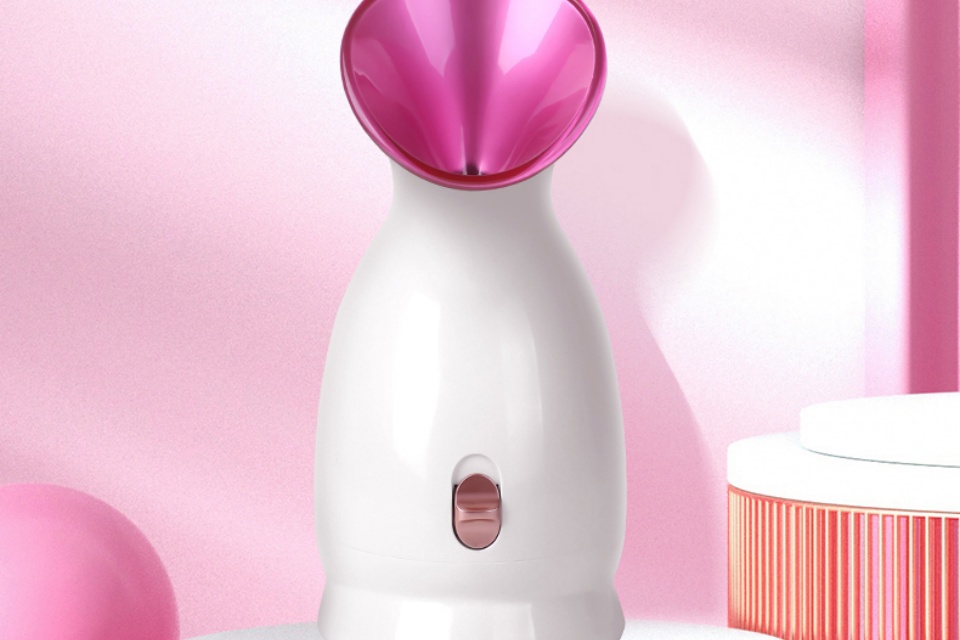Does a Water Flosser Actually Work
Summary
Water flossers, also known as oral irrigators, are dental devices that utilize a stream of pulsating water to clean between teeth and along the gumline, providing an alternative to traditional string flossing. Developed in the 1960s, the technology has evolved significantly, leading to widespread adoption among both dental professionals and consumers as a means to enhance oral hygiene practices. Their efficacy in reducing plaque and improving gum health has sparked interest and debate within the dental community, positioning water flossers as a notable topic in contemporary oral care discussions.
Research indicates that water flossers can effectively dislodge food particles and plaque, especially in individuals with braces or other dental appliances, potentially outperforming traditional floss in certain contexts. Studies have demonstrated that they can remove up to 99.9% of plaque in treated areas, promoting better overall oral health and making them a favored option for those with limited dexterity or specific dental needs. However, the overall effectiveness of water flossers compared to traditional flossing remains a subject of controversy, with some studies suggesting that they may not significantly reduce visible plaque when used alone, leading to recommendations for a combined approach to oral hygiene.
Despite their advantages, including ease of use and versatility, water flossers have notable limitations. Critics point out that they cannot replace the mechanical action of traditional floss, which is crucial for effectively removing tartar-causing plaque. Additionally, concerns regarding the initial cost, maintenance requirements, and practical challenges associated with their use—such as messiness and portability—have led some dental professionals to advise caution when considering them as a sole method of interdental cleaning.
In summary, while water flossers represent a significant advancement in oral hygiene technology and are particularly beneficial for specific populations, their role within a comprehensive oral care regimen remains complex. Dental professionals often advocate for a balanced approach that combines water flossing with traditional methods to maximize oral health benefits.
History
Water flossing has evolved significantly since its inception in the 1960s, when the first oral irrigator was developed by a Colorado dentist and engineer. This early model was relatively bulky and rudimentary compared to today's sophisticated designs, but it marked the beginning of a new approach to oral hygiene. Over the decades, advancements in technology have led to the creation of sleek, user-friendly devices that have become commonplace in many households, reflecting a long-standing commitment to improving dental care practices.
In parallel with the development of water flossers, traditional dental floss has its own rich history. The concept of cleaning between teeth can be traced back to ancient times, where various tools were employed for this purpose. However, true dental floss was first formally recommended by dentist Levi Spear Parmly in 1819 in his book, “A Practical Guide to the Management of the Teeth.” This marked the beginning of flossing as a recognized practice for dental hygiene. The first patent for dental floss was issued 55 years later to Asahel M. Shurtleff, who designed a floss dispenser with a cutter, a design that bears resemblance to some of the floss products available today.
Initially, dental floss was made from unwaxed silk, but it only gained widespread popularity after World War II, when it transitioned to more durable nylon materials. This shift contributed to increased usage and acceptance of flossing as a crucial component of dental care routines. Today, dental floss is available in various forms, including flavored varieties and both waxed and unwaxed options, as well as in convenient precut forms known as dental picks.
As the dental community has continued to explore new methods of oral hygiene, water flossers have been recognized for their unique advantages, particularly in dislodging plaque and debris from areas that traditional floss may struggle to reach. Studies have shown that water flossers can outperform string floss in reducing gingivitis, which has contributed to their rising popularity among both dental professionals and patients alike. The innovation of water flossing represents a significant step forward in the evolution of dental hygiene practices, underscoring the ongoing importance of adapting oral care methods to meet contemporary needs.
Mechanism of Action
Water flossers operate by utilizing a combination of pressurized water and pulsation to effectively clean between teeth and along the gumline. The fundamental design includes a water reservoir, a motorized pump, and a specialized tip that directs the water stream toward the teeth. Users fill the reservoir with water or an antimicrobial solution and position the tip above the gumline. Upon activation, the device emits a steady stream of pulsating water, which dislodges food particles, plaque, and bacteria from hard-to-reach areas.
The Science Behind Water Flossing
The mechanism of action of water flossers is primarily based on the hydrodynamic effect generated by the pulsating water stream. This action disrupts the biofilm—a sticky layer of bacteria that forms on teeth and gums. Unlike traditional flossing, which mechanically scrapes the surfaces of teeth, water flossers utilize the force of water to flush out debris from interdental spaces and around orthodontic appliances. This method can be particularly advantageous for individuals with braces or dental implants, as it can navigate the complexities of their dental structure more efficiently than string floss.
Pressure and Pulsation
Water flossers typically operate at pressures ranging from 10 to 100 psi, depending on the model. This adjustable pressure allows users to customize their flossing experience to suit their comfort level. The pulsating action not only cleans but also provides a gentle massaging effect on the gingival tissues, which can enhance circulation and reduce inflammation. Regular use of water flossers may contribute to improved gum health, as indicated by lower gingival index scores in studies comparing water flossing to traditional methods.
Effectiveness
Water flossers, such as the Waterpik, have gained popularity as an alternative to traditional string flossing, especially for individuals with specific dental needs. Research indicates that water flossers can effectively aid in plaque removal and promote gum health. A study demonstrated that water flossers could remove up to 99.9% of plaque from treated areas, thereby helping to prevent cavities and gum disease. Another clinical study found a significant reduction in overall plaque (74.4%) and interproximal plaque (81.6%) among participants using water flossers in conjunction with manual brushing.
The gentle massaging action of water flossers can also enhance gum health by reducing inflammation and bleeding, making them particularly beneficial for individuals with sensitive gums. Furthermore, the ability of water flossers to clean around dental work, such as braces or implants, is an added advantage. Studies show that individuals undergoing orthodontic treatment may struggle with plaque retention, and the use of water flossers can help mitigate these challenges.
However, evidence regarding the overall effectiveness of water flossers compared to traditional flossing remains somewhat inconclusive. Some studies suggest that while water flossers can disrupt the biofilm and reduce bacterial levels, the degree of plaque removal may not significantly differ from that achieved by string flossing alone. As a result, dental professionals often recommend a combined approach, utilizing both methods for optimal oral hygiene.
Advantages
Water flossers offer several advantages over traditional flossing methods, making them a popular choice for many individuals seeking to improve their oral hygiene.
Ease of Use
Water flossers are generally easier to use than traditional floss, especially for individuals with limited dexterity, such as those with arthritis or disabilities. The user-friendly design allows individuals to maneuver the device comfortably around their teeth without the need for intricate hand movements. Many find that the experience of water flossing is more enjoyable, which can boost consistency in daily oral care routines.
Effectiveness in Plaque Removal
Studies have shown that water flossers can be effective in reducing plaque and gingival bleeding, especially in individuals with braces or other orthodontic appliances. Research indicates that both water flossing and conventional interdental flossing provide statistically significant differences in plaque and gingival health among orthodontic patients, suggesting that water flossers are a viable adjunct to standard oral hygiene practices. The gentle yet powerful stream of water can reach areas that traditional floss may miss, particularly around brackets and wires, which can be challenging to clean thoroughly.
Gentle on Gums
Water flossers are gentle on the gums, reducing the risk of injury and discomfort that can sometimes occur with traditional flossing. The adjustable pressure settings on many water flossers allow users to customize their experience, catering to their personal comfort levels while effectively cleaning between teeth.
Versatility
Many water flossers come with interchangeable tips designed for various oral health needs. For instance, specialized tips can target areas around dental implants, crowns, and braces, allowing for customized cleaning options. This versatility can make water flossers an ideal choice for families, as different users can easily switch tips for their individual needs.
Encouragement of Consistent Use
The ease and comfort associated with water flossing may encourage individuals to maintain a regular oral hygiene routine. The convenience and efficiency of water flossers can lead to increased adherence to daily cleaning habits, which is crucial for long-term oral health.
Disadvantages
While water flossers offer several advantages for oral hygiene, there are notable disadvantages that users should consider before relying solely on them.
Limitations in Cleaning Effectiveness
Water flossers are not universally effective in replacing traditional flossing methods. Although they excel at removing food particles and rinsing away plaque, they cannot replicate the scraping action of string floss that is necessary for effectively eliminating tartar-causing plaque, which can contribute to gum disease. Studies indicate that while water flossers may improve gum health, their ability to reduce visible plaque is inconclusive, suggesting that they should be used as a complement rather than a replacement for traditional flossing.
Cost and Maintenance
The initial investment for water flossers tends to be higher compared to traditional floss, which is generally inexpensive and widely available. Furthermore, water flossers may require regular maintenance, including the replacement of nozzles every few months, which can add to the long-term costs.
User Experience Challenges
For some users, particularly those with limited manual dexterity or specific dental conditions, water flossers can present challenges. They may be unable to reach certain areas effectively, and improper use—such as using high-pressure settings—can lead to gum bleeding or discomfort. Additionally, the learning curve associated with finding the optimal water pressure and stream mode can deter some users, making them less user-friendly compared to traditional flossing methods.
Portability and Practicality
Water flossers are often less portable than traditional floss, which can be cumbersome for travel due to their size and the need for a power source. They can also be messier to use, as water can spray out of the mouth during the process, creating a need for additional clean-up afterward.
Recommendations
Water flossers are increasingly recommended for various populations, particularly for those with specific dental needs. They are considered beneficial for individuals with orthodontic appliances, such as braces, and for patients with fixed dental work, as they provide effective plaque control without the manual dexterity required for traditional flossing methods. Additionally, water flossers are endorsed for use by individuals who may struggle with manual dexterity, making them accessible for children and people with disabilities.
Clinical studies have shown that water flossers can significantly reduce dental plaque and gingival bleeding in orthodontic patients, suggesting their efficacy as part of a comprehensive oral hygiene regimen. They are also recommended for use in combination with regular dental check-ups and professional care to maximize oral health outcomes. For the best results, users are advised to follow guidelines that include brushing twice daily with fluoride toothpaste and using the water flosser as directed, ideally once a day at night.
While water flossers are effective, it is crucial for users to be informed about their limitations. A systematic review noted that while water flossing improved gingival health, it did not consistently demonstrate a reduction in visible plaque compared to brushing alone. Therefore, patients are encouraged to maintain a balanced oral hygiene routine that includes both brushing and the use of water flossers, alongside periodic consultations with dental professionals to tailor their care to individual needs.
 English
English Español
Español Português
Português Pусский
Pусский Français
Français Deutsch
Deutsch 日本語
日本語 한국어
한국어 Italiano
Italiano عربى
عربى


